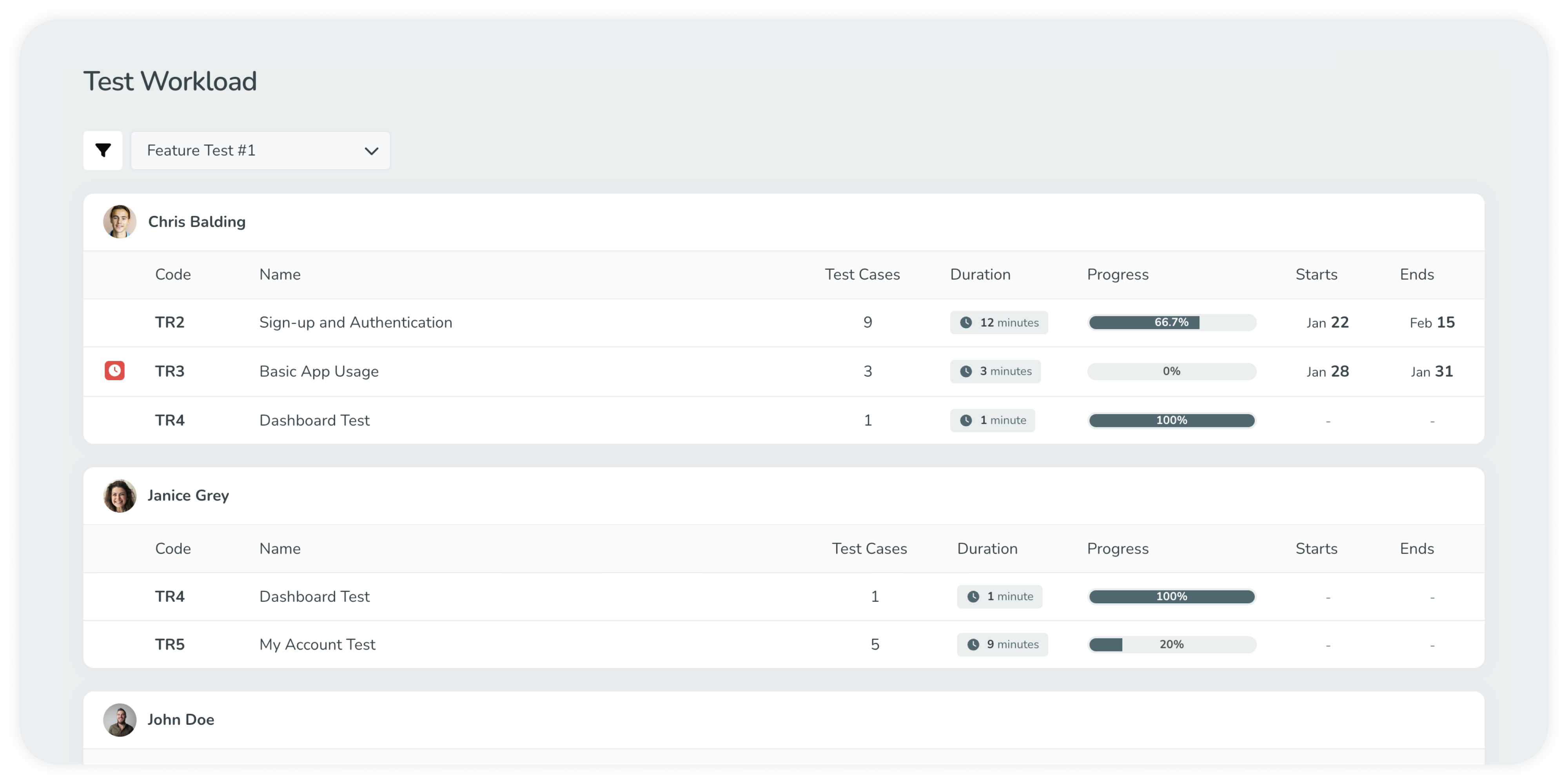In software development, testers play a pivotal role in ensuring the quality and success of the final product. However, demanding and tight schedules and heavy workloads can have negative effects on not only the effectiveness of testers, but their well-being and morale.
This Academy Article explores why managing tester workloads is crucial, the impacts of tester fatigue, and how TestMonitor's Tester Workload Report can be used to help prevent burnout and enhance overall testing effectiveness.

Testers play a critical role in helping software development teams achieve their quality standards and goals, which means their ability to be thorough throughout the quality assurance (QA) process is key.
However, having testers juggle multiple QA projects at different stages, each focusing on different scopes and testing approaches, can negatively impact their testing capabilities and flow. This can lead to slipping attention to detail, compromising the overall quality of testing.
Managing workloads helps in optimizing a project’s resources, ensuring that testers can dedicate sufficient time and attention to each project stage.
Tester fatigue can have far-reaching consequences, affecting both the individual testers and the overall project. Some of the key impacts include:
TestMonitor provides a powerful solution through its Tester Workload Report, allowing QA Managers to navigate, analyze, and manage tester workloads effectively.
To get started:
Using TestMonitor’s Tester Workload Report empowers teams to proactively address potential bottlenecks, prevent burnout, and ensure optimal testing conditions, which all contribute to the overall success of the software development effort.